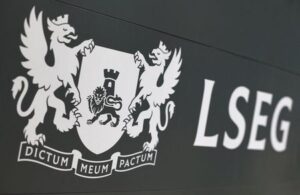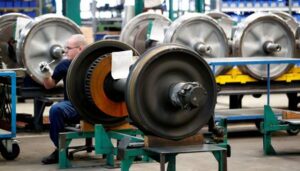By Mike Dolan
LONDON (Reuters) -The stark divide between the performance of the U.S. manufacturing sector and the more dominant services sector is giving stock markets a headache at a critical moment.
Investors desperate to parse the economic mood amid resurfaced recession fears are scrutinising monthly business surveys for signs of a downturn. But what factories and services firms are saying right now seem poles apart.
U.S. manufacturers continue to register declines in overall activity, as they have for much of the past two years during the interest rate squeeze. Surveys from both ISM and S&P Global concurred on this in August, with darkening clouds in China and Europe appearing to weigh on the factory sector.
The negativity was underscored by an eye-catching detail in the ISM manufacturing survey: a big jump in reported inventories. The rise in August was the first increase in 18 months.
But on the flipside, the mostly domestically-facing services sector – which makes up more than 75% of U.S. GDP – reflected a much brighter picture.
S&P Global’s U.S. services survey for August registered its fastest pace of expansion since the Federal Reserve started raising interest rates in March 2022.
As a result, S&P Global’s all-industry readout is currently humming along nicely, close to its best levels in more than two years.
CANARY IN THE DATA MINE?
While the manufacturing sector accounts for only about 10% of U.S. national output, gloom in manufacturing PMI surveys was cited as a cause of the shakeout in lofty U.S. stock prices this week.
This angst could reflect that manufacturing readouts now capture information about the red-hot chipmaker firms so prominent in the overall market cap of major stock indexes.
Even though the U.S. share of global chip manufacturing is currently only 10%, the information technology sector – which includes many big chipmakers – now accounts for almost one-third of the S&P 500’s entire $46 trillion market value.
And Washington’s post-pandemic push for “re-shoring” and “re-industrialisation” has, via 2022’s CHIPS act, helped to boost optimism about U.S. manufacturing by setting a course to increase the U.S. share of the chip market to 14% by 2032.
Sour manufacturing readings may therefore feed the gnawing concern about the durability of the dominant artificial intelligence theme and thus lead to continued market ructions.
HEADFAKE FROM FACTORIES?
Putting market volatility aside, what the divide between the prevailing fortunes of the two different sides of economy says about the true risk of recession is an open question.
While manufacturing accounts for a low share of U.S. GDP and employs just 8% of U.S. workers, its notoriously cyclical nature means it could be seen as a canary in the coalmine. And it’s certainly more sensitive to the state of the global economy at large than services.
But even if we consider manufacturing surveys to be a warning signal, they aren’t yet flashing red. While the August ISM readout did show declining activity for the fifth straight month, the ISM itself claims that a manufacturing index below the 50 boom-bust line is not necessarily a game-changer by itself.
It insists readings above the 42.5 level – which has not been breached since April 2020 – have over time indicated continued expansion of the wider economy.
Add to all of this the dominance of services and their relative buoyancy through the late summer period, and it is clear why investors – though growing cautious – are reluctant to bet the farm on a wider downturn.
All of the speculation then flips back to Friday’s employment report to confirm signs of labour market weakening seeping in from both of these surveys, as well as job openings and layoffs data earlier in the week.
As if reflecting the indecision, the 2-to-10 year Treasury yield curve’s two-year inversion – so often a harbinger of recession in the past – has returned to precisely zero this week in anticipation of the jobs report that could go some way to tipping the scale to one side.
The opinions expressed here are those of the author, a columnist for Reuters
(By Mike Dolan; Editing by Jamie Freed)





